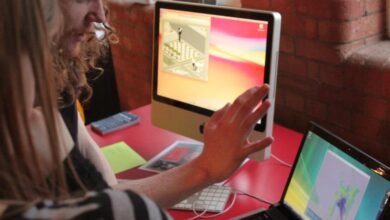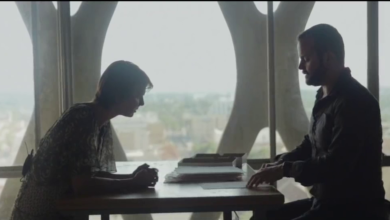
How much is that NFT in the window?
3rd Nov 2022, LSE, , St Clements Building, London. WC2A 2AE
Non-Fungible Tokens have emerged as a great leveller and wealth creator. A lot of artists out there are trying to thrive within this decentralized blockchain-based technology in order to be paid fairly for their craft.
Not your contract not your NFT!
However, it’s not as straight forward as it seems. In most cases they end up putting their art unwittingly on shared ERC1155 smart contracts of popular NFT marketplaces and risk losing their IP forever. This is a ticking time bomb waiting to go off
Then there is about 11 million NFTs locked in collectors’ wallets, many of them in urgent need of correct pricing as noted by NonFungible.com. There are over 360,000 NFT owners, and according to ArtNet, over 50% of NFTs values are just below 200 dollars. Some of them retained strong value, some are lingering in wallets like unwanted puppies.
There is a new team in town, who are bringing a No-Code solution to create advanced NFT collections and value NFTs which are sitting around abandoned in wallets.
HQNFTs.xyz (Twitter) presented their advanced NFT No-Code multi-chain minting and Valuation Platform at “NFT London”. An official satellite event, co-hosted by LSE Generate, led by founder Divya Prashanth, who is a speaker and leader in the blockchain & data science space.
Artists are keen to create new collections, digital galleries and collectors want to acquire them for their clients. But what is missing is for artists to create NFT collections where they own their IP and a transparent valuation model for galleries to value NFTs. Many digital galleries have been on a journey to re-assess what they have and are keen to get some assurance on pricing of NFTs that they could build collectors’ base and audiences for the artists.
Eva Pascoe (e-payments pioneer) hosted a discussion panel for traditional and digital artists on how to get NFTs minted at affordable cost, how to get them priced and traded in a transparent way. She is a keen proponent of fractionalised ownership, to democratise access to top NFT collectables.
The workshop was held at LSE Generate – very appropriately the home of Entrepreneurship at London School of Economics and a hotbed for financial innovation in London.
Eva introduced the problem of lack of blockchain developers, the result of it is that minting is more expensive than it should be, and overly complicated for the artists. She has also noted issues around fluctuating “gas” value, transparency of valuation as well as the difficulty for the artists to own their smart contract for each individual piece, a preferred option instead relying on OpenSea or other marketplaces.
On the panel Eva was joined by Hallidonto, Divya and Federica.
Hallidonto is a leading digital artist – author of a very loved Cyborgia collection. He introduced his current approach, working to issue NFT collection of generative art to raise funds for a VR Immersive Opera project planned for next year titled @SanctumCyborgia (Instagram)/
Hallidonto has noted that PFP or NFTs are the perfect vehicles to help to connect artists with fans, supporters and collectors in a direct relationship.
Supporters are looking for new ways to crowdfund new projects and gain unique collectables that can have pure aesthetic utility or could include meet-and-greet behind the scenes in the theatre or even collaborations with the artist.
Utility of NFT can be complex, as it varies depending on what extra bonus points can be issued as part of the offer – HQNFTs advance no-code NFT creations platform makes it easy to add utility to the smart contracts without a single line of code.
To Code or Not to Code?
Divya’s platform creates a generative art PFP NFT collection, the smart contract, and puts it on the blockchain without any code in a relatively straightforward process under 20 minutes.
If you are the artist, you can own your NFT, Smart contract, and IP without a single line of code.
The problem facing artist who are unwittingly putting their collections on shared NFT contracts is very dear to her heart as Divya had to make a choice earlier on in her career between following her passion for art or technology.
At that juncture, Divya chose technology and fast forward all these years while NFTs are leading the way in bringing about awareness to the blockchain and Web3 space, the artist is still disenfranchised. This is when Divya decided to build HQNFTS.xyz, a no code platform where the artist can own their contract and express themselves without having to unwittingly lose their IP.
The panel also explored what is required by galleries and curators, their perspective and needs explained by Federica Potenza (MA in Business and Digital Art, ex Sotheby’s art provenance researcher).
Traditional art provenance and valuation is not exactly science, with information about provenance only included if it enhances the value of the artwork in question as noted by Federica. This process is often lacking transparency but somehow it has been acceptable far too long in the traditional art world. It is likely that entering new art works on blockchain would improve transparency, leading to clear pricing strategy. Galleries need to do what they do best – create communities, nourish knowledge and appreciation, keep authoritative records and help to outreach to new audiences.
Divya showcased HQNFTs.xyz no-code minting process in a live demo. On HQNFTs you can now mint collections on Ethereum and Polygon, with plans to expand to other chains including Solana and BSV.
Currently HQNFTs values NFTs both qualitatively and quantitatively on Ethereum, Polygon and Solana. Qualitative valuation includes valuing NFTs based on trait rarity and utility. Qualitative valuations include sentiment and emotion analysis of the NFT community’s social media presence. Soon to follow analytics include history of previous ownership, tangibility, and liquidity – as always, the latter would attract premium price.
Interoperability will also be a bonus point, if the artwork can be open and not limited to existing as an instance in only one metaverse – something that open standards community is pushing for at the moment.
There is no business like NFT business
Finally, some more technical aspects were covered by Divya, examining different types of NFT smart contracts and the pitfalls of getting minted on various marketplaces versus platforms that allow the artists to hold their own smart contracts.
The bottom line is that no-code minting makes NFT collection accessible for anyone who aims to raise funds for a good cause project and more transparency with clear algorithm will make trading easier for both creators and collectors.
Thank you LSE Generate for hosting and thanks to artist, gallery owners, LSE students from Management, Economics and Sociology departments for a very lively and much needed debate.
LSE Generate, St Clements Building, London. WC2A 2AE
Further refs:
Read: Ruth Catlow “DAOs and The Arts”
Watch: Ian Utile interview with HQNFT.xyx – 2Nov 2023
Watch: Creating NFTs for Ninja Punk Girls – at 31min (Richard Boase, founder of NPG for Cybersalon.org, Black Dojo alumni




